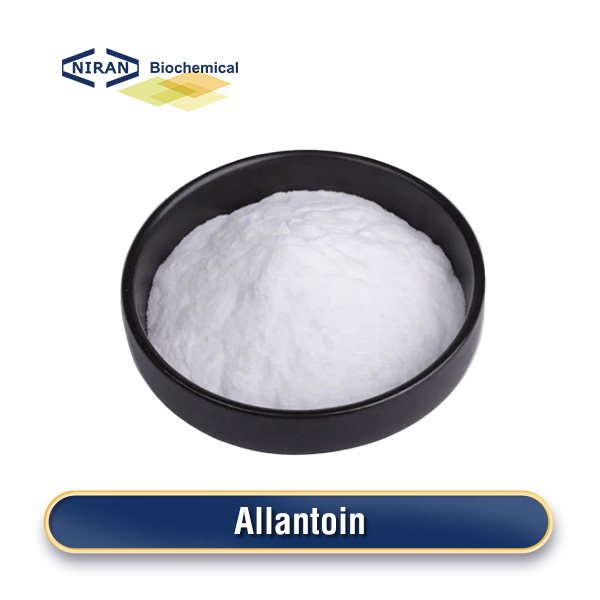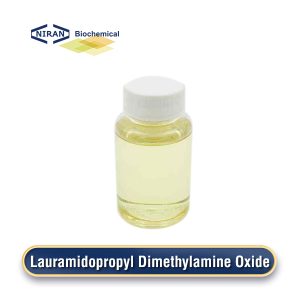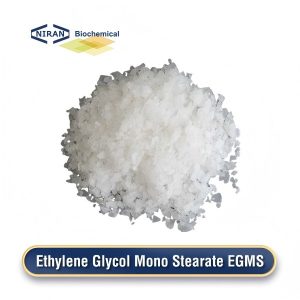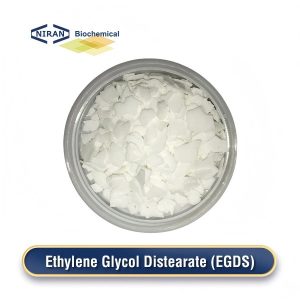Allantoin
- CAS Number: 97-59-6
- Chemical Formula: C7H9NO3
- MOQ: 1000KG
- Shelf Life: 2 years
- Synonyms: Glyoxyldiureide, 5-Ureidohydantoin, 1,3-Dihydro-2H-imidazole-2-one, 5-Ureidohydantoin
Product Description
What Is Allantoin?
Mammal urine and plants like comfrey both naturally contain the chemical allantoin. Its calming, restorative, and moisturizing qualities make it a common ingredient in pharmaceutical and cosmetic goods. It helps stimulate cell regeneration, making it beneficial for treating dry, chapped, or irritated skin.
Preparation:
Allantoin can be synthesized by the oxidation of uric acid, which involves reacting uric acid with an oxidizing agent like potassium permanganate or hydrogen peroxide. Crystallization is subsequently used to purify the resultant chemical. Additionally, allantoin can be extracted from plants such as comfrey, which contains allantoin naturally, though synthetic production is more common for commercial purposes.
Related Parameters:
| Items | Standards |
| Assay | 98.5-101.0% |
| Melting Point | 225°C-240°C |
| Solubility | Slightly soluble in water Very slightly soluble in alcohol |
| Identification | A. Infrared spectrum is march with the spectrum of allantoin CRS B. Thin-Layer Chromatographic Identification Test TEST C |
| PH | 4.5-6.0 (0.5% SOLUTION) |
| Optical rotation | -0.10º~+0.10º |
| Related substances | <0.5% |
| Loss on drying | <0.1% |
| Sulfated ash | <0.1% |
Recommended Dosage of Allantoin:
| Applications | Dosage |
| Skincare Products | 0.1% – 2.0% |
| Hair Care Products | 0.1% – 0.5% |
| Cosmetics (Creams & Lotions) | 0.5% – 2.0% |
| Wound Healing | 0.5% – 5.0% |
| Lip Care (Balms & Lipsticks) | 0.5% – 1.0% |
| Diaper Rash Creams | 1.0% – 3.0% |
| Pharmaceutical Ointments | 0.5% – 2.0% |
| Shaving Creams and Gels | 0.5% – 1.5% |
| Anti-Aging Products | 1.0% – 2.0% |
Allantoin Has Wide Range of Uses:
- Skincare: It is commonly incorporated into moisturizers, creams, and lotions to promote cell regeneration, alleviate skin irritation, and soothe dry or sensitive skin. Allantoin is especially beneficial for treating eczema, sunburns, and general skin discomfort.
- Hair Care: Allantoin is used in shampoos and conditioners to hydrate the scalp, reduce dryness, and improve overall hair texture and health.
- Wound Healing: It is a key ingredient in topical ointments and creams, helping to accelerate the healing of cuts, scrapes, and minor burns by stimulating the growth of new skin cells.
- Lip Care: Found in lip balms and lipsticks, Allantoin helps prevent cracking, dryness, and keeps lips smooth and moisturized.
- Anti-Aging: It encourages skin regeneration in anti-aging products, which lessens the visibility of fine wrinkles and evens out skin tone.
User Asked Question:
Q: Does Allantoin have any side effects?
A: In general, allantoin has few adverse effects and is well tolerated. However, as with any ingredient, some individuals may experience mild allergic reactions, so it’s advisable to patch-test products before full use.




